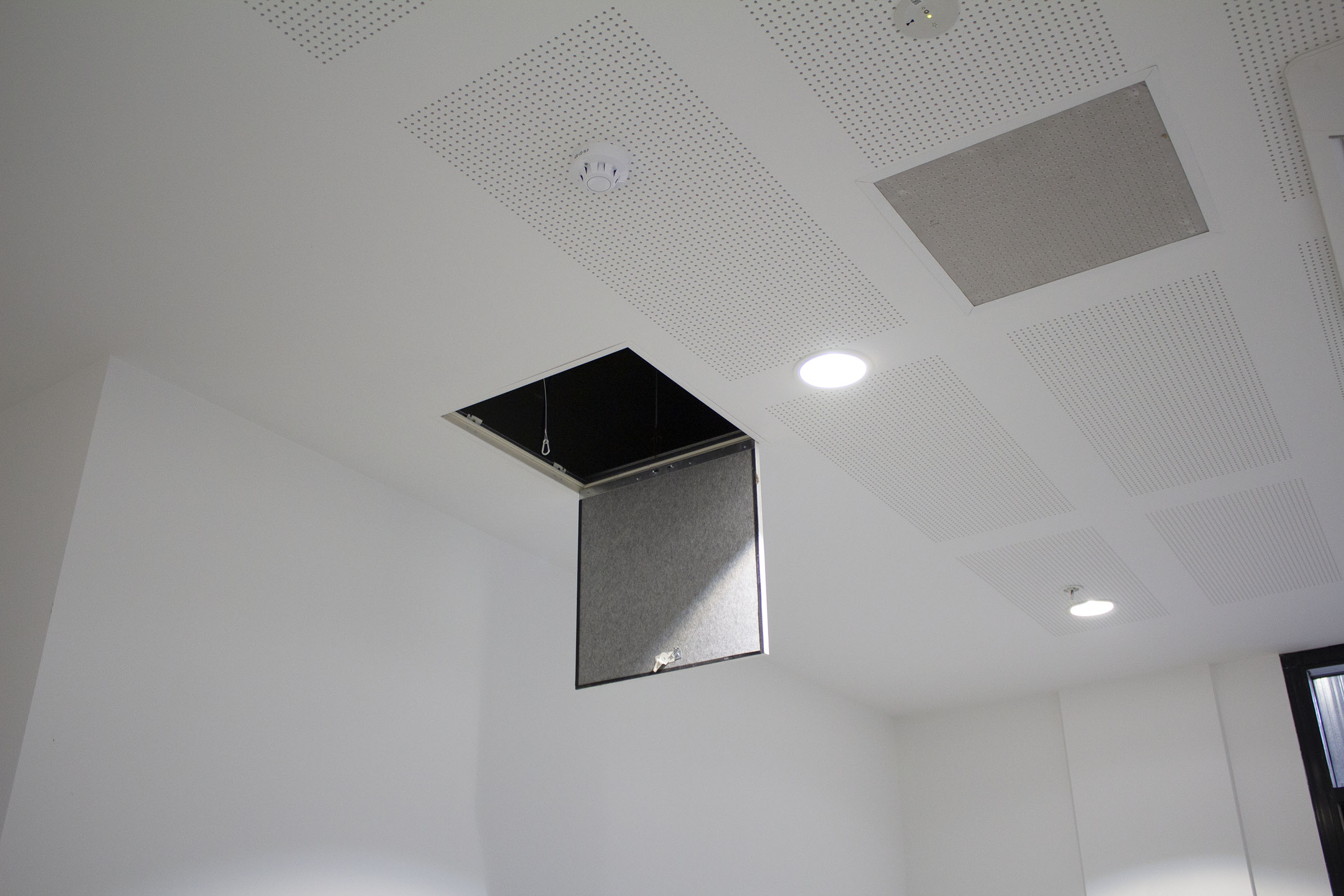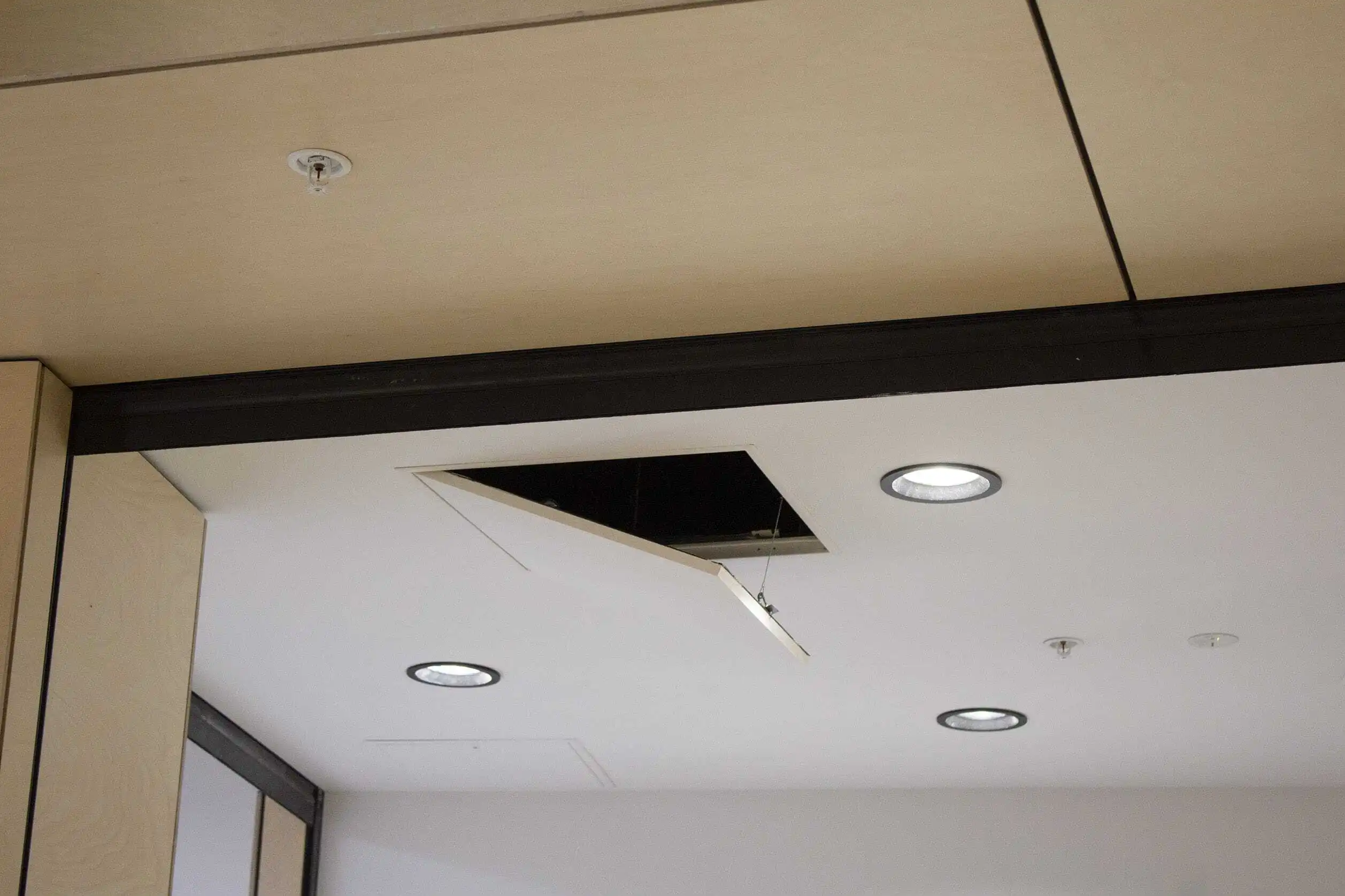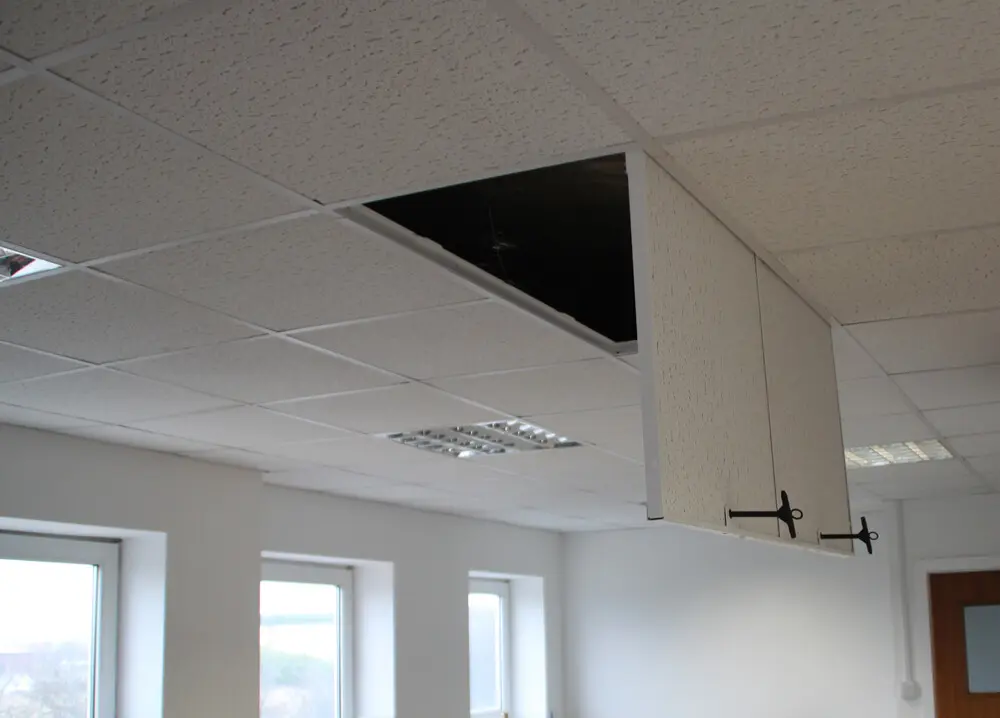PRANCE metalwork is a leading manufacturer of metal ceiling and facade systems.
Ceiling Access Panels for Seamless Maintenance
Functional design requires spaces to meet three basic needs: both modern interiors and practical needs, along with good visual appeal. Ceiling access panels serve as the ideal balance point between efficiency, technical capability, and visual appearance needs. These panels create an easy channel for reaching concealed ceiling sections without affecting the building design. These panels are essential components throughout residential and commercial environments because they allow access to electrical wiring along with HVAC systems and plumbing services.
This resource delves into every aspect of ceiling access panels delivering information about their functionality and advantages and teaching installation methods along with maintenance advice.
1. What Are Ceiling Access Panels?
Specially designed doors and hatches known as ceiling access panels enable systems maintenance staff to reach components hidden inside ceiling areas. The panels allow necessary maintenance work to be carried out without needing major structural alterations to the building. Access panels exist in different materials and sizes and multiple design options which enable them to function in almost any location.
Through the installation of ceiling access panels, residential and commercial properties gain essential maintenance capabilities without disrupting building operations. The ability to maintain organic ceiling design combines with operation function as built-in features of these panels.
2. Benefits of Ceiling Access Panels

Modern construction and renovation projects rely on ceiling access panels as a fundamental feature that brings numerous benefits to operatives.
Improved Maintenance Efficiency
You must cut through your ceiling to access hidden utilities whenever you lack a panel because the process takes both time and cost. Ceiling access panels serve as designated points for fast maintenance procedures while resolving the maintenance difficulties that hidden utilities generate.
Aesthetic Appeal
Modern ceiling access panels merge perfectly with their surface environment through current design standards. These access points are ready for either a paint treatment or texturing that will allow them to match ceiling aesthetics for a professional appearance.
Cost Savings
The installation of ceiling access panels results in both decreased labour expenses and eliminated requirements for extensive structural upkeep. Ceiling access panels function as protective shields that deflect potentially destructive forces while extending system durability.
Easy Installation
New and existing building projects, as well as renovation work, allow for simple ceiling access panel applications. The implementation process takes only a few hours to finish when builders use appropriate tools alongside proper guidance.
3. Types of Ceiling Access Panels

The selection of a ceiling access panel depends on three key considerations involving materials and design aspects and planned use requirements.
Hinged Panels
Hinged panels stand as the dominant selection among access panels due to their convenient opening mechanism, which requires minimal effort to operate. These panels make excellent solutions when access needs to happen often.
Removable Panels
These particular panels feature a construction that allows for occasional entry points. The framing system separated from these panels enables enhanced freedom for maintenance activities.
Fire-Rated Panels
Safe buildings need fire-resistant panels constructed from heat-resistant materials to protect occupants in risk areas. Commercial facilities utilize these panels on a regular basis.
Acoustic Panels
Acoustic ceiling access panels are made to reduce the flow of sound, thus serving ideally for areas that need decreased noise levels.
4. Installing Ceiling Access Panels
Step 1: Plan the Location
Consider locations where equipment access remains simple, yet the room design remains unobstructed. Sufficient room must be available to enable a full opening of the panel.
Step 2: Measure and Mark
For achieving a proper fit exact measurement measurements play an essential role. Trace the panel's dimensions on the ceiling surfaces, maintaining pattern alignment with existing grid elements and design elements.
Step 3: Cut the Opening
A utility knife or saw should be used to make ceiling cuts following the marked guide. Protect concealed utilities as you disrupt them during your work.
Step 4: Secure the Frame
PUT THE FRAME TOGETHER ACCORDING TO THE PROVIDED INSTALLATION INSTRUCTIONS FROM THE MANUFACTURER. Screws and adhesives should be used when attaching the panel, depending on what material makes up the ceiling and panel frames.
Step 5: Attach the Panel
After the frame achieves stability, attach the opening panel to it. Check that the panel operates without resistance when it opens and shutters.
5. Maintaining Ceiling Access Panels
The proper care of ceiling access panels maintains both their operational stability and their overall lifecycle duration. Initial cleaning stops dust buildup along with periodical checks detecting possible wear and damage.
Check the condition of both the framework as well as hinges and locks on the panel surface. Painted or textured panels need touch up for finish areas that show wear to preserve their look.
6. Common Challenges and Solutions

Misaligned Panels
A panel that does not sit correctly should be investigated for incorrect frame installation. Realignments between frame and panel often prove essential to create perfect seamless integration.
Difficulty Opening or Closing
Rust happens when either cleaning debris accumulates or the hinges sustain any damage. Hinge maintenance includes both cleaning procedures followed by lubrication procedures if needed. Replace any damaged components promptly.
Damage to the Ceiling
Panel installation and handling mistakes can lead to ceiling area damage near the opening. Building woes can be avoided when you follow the makers' instructions while using appropriate installation tools.
7. Exploring The Parameters Of Optimal Ceiling Access Panel Selection
Before purchasing ceiling access panels, choose a model that matches your concealed system configuration alongside panel visibility and adheres to the existing building design. Contract professionals for assistance when deciding which ceiling access panel will work best for your application.
For extended usage, aluminium or steel panels will provide superior durability for ceiling access components. Commercial facilities need to follow safety requirements, while the selected panel needs to meet both building standards and local codes.
Enhancing the Room’s Functionality
Ceiling access panels overcome their basic function by becoming design options for the space. Today's panels blend contemporary design accents with functional features to create both sophisticated visual appeal and access points. Ceiling access panels improve both the function and aesthetic of rooms when combined with ceiling lighting features or additional architectural components.
Conclusion
This guide delivers complete information about choosing, installing, and maintaining ceiling access panels. You invest in ceiling access panels to ensure both efficient maintenance alongside a professional clean finish. To discuss fully support, please contact PRANCE Metalwork Building Material Co. Ltd. for further information.
FAQs
What are ceiling access panels made of?
Ceiling access panels consist largely of aluminium components with steel alternatives and high-strength plastic options available. These products show strong durability and high resistance to wear and tear.
Are ceiling access panels able to add to existing ceiling spaces?
Existing ceilings accept the addition of ceiling access panels through proper installation methods. The success of minimizing damage depends on both appropriate planning and precise installation methods.
Are ceiling access panels customizable?
The design and utility demands of a space determine many access panel variations that can include adjustments for size, shape, and finishing quality.
How should ceiling access panels be maintained in high humidity environments?
Panels in humid areas should include corrosion-resistant materials followed by regular inspections to stop moisture-related destruction.
Do ceiling access panel setups demand expert installation, or can DIYers complete them?
Industrial panels suitable for DIY work exist, but professional installation experts should handle complex commercial and complex heat systems.




















